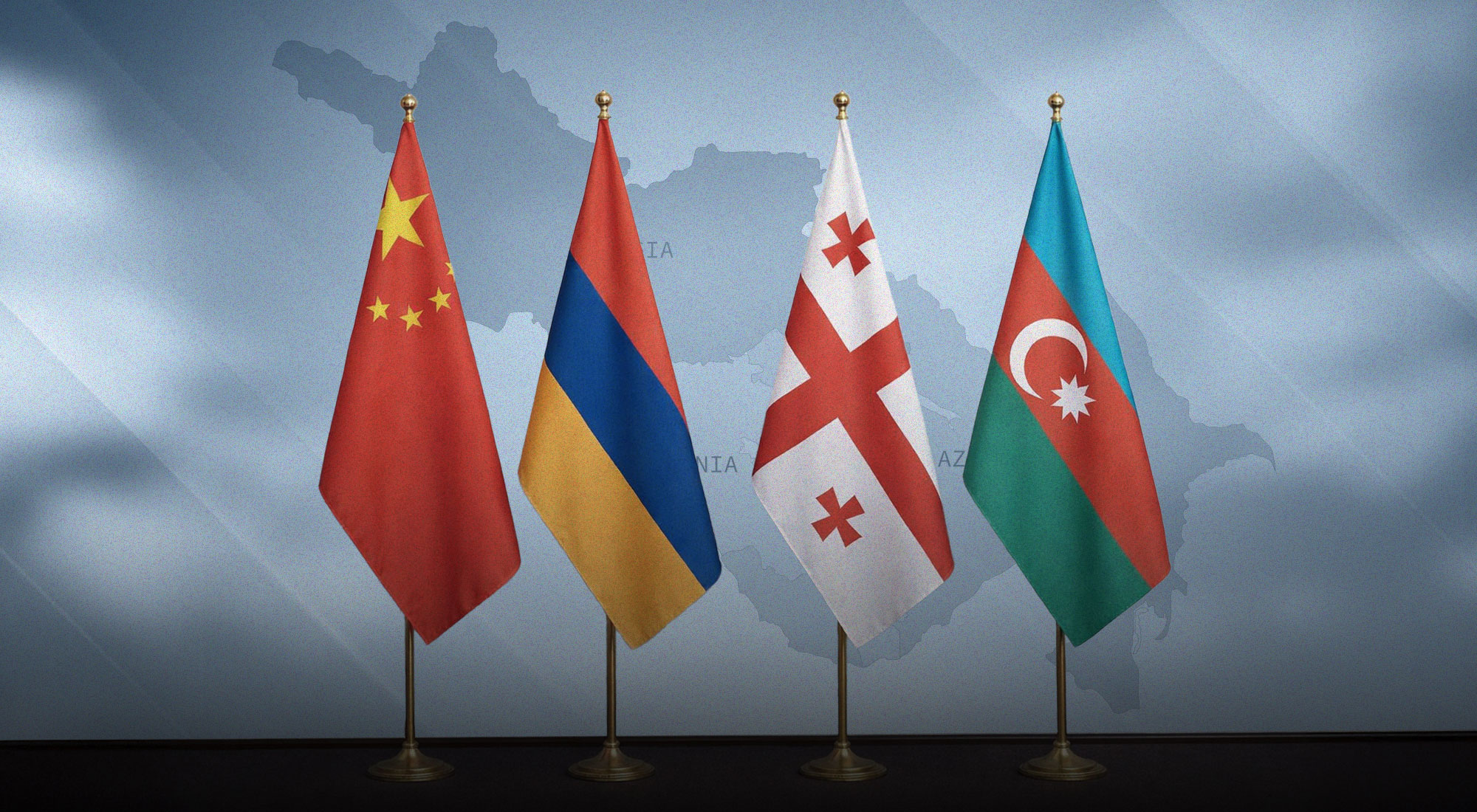This paper considers the main factors driving the current trade dispute between the US and China and its consequences for several Southeast Asian countries. After examining the core drivers of the rivalry between Beijing and Washington, it will analyze the current trade conflict prior to the impact of the US-China dispute on the ASEAN countries. Although the US-China dispute certainly offers opportunities for Southeast Asian countries in terms of trade and investment, these potential benefits may be more than negated by broader economic trends and the unevenness of greater regional development.
I. Geo-strategic competition between the US and China
While the early stages of the standoff have been primarily characterized as economy-driven, the elongated “decoupling” of the world’s two largest economies is, indeed, a political process that was a long-time coming. From an economic perspective, there are two primary reasons behind any trade war; trade imbalances and industrial structures overlap. In most cases, no one emerges as a winner in any trade war. More often than not, the real motives go beyond economic reasoning, which is applicable to the US-China “decoupling” as well.
Going beyond a trade dispute, numerous Chinese observers think economic and technological rivalry with the US has heightened and that the Western Pacific is the focal point of the US-China strategic competition. Today, the two economic superpowers trade with each other, albeit in a stagnated manner, prior to the signing of the Phase One trade deal in early January. However, the relationship continues to be marked by a lack of trust, which is reflected in the rather circumventive wording of the trade deal.
While the US and China grew closer economically in the post-1989 period, their foreign policies diverged. Among other topics on the global agenda, the two countries fundamentally disagree on how to engage with rogue states such as North Korea, Iran, and Syria. Moreover, the lack of trust has been substantiated in the US’ conservative and distrustful approach toward China’s Belt and Road Initiative (BRI), an unprecedented attempt to connect Asia with Africa and Europe via land and maritime networks along six corridors with the aim of improving regional integration, increasing trade and stimulating regional economic growth.

Amid a disruption of trade relations and the imposition of harsh tariffs on China, the distrust between the US and China reached a critical juncture when the 2018 US National Defense Strategy labeled China as one of the greatest threats for the US, putting it in the same basket with Russia, Iran, and North Korea.
Despite the signing of the Phase One trade deal at the beginning of 2020, the future economic and geo-political unraveling between the two economic giants, remains to be seen. This is besides the present and potential spill-over effects this standoff might have on other countries.
II. The geo-economic warfare
In light of the “phase one” trade deal between the US and China, forecasting the two economies and expanding on the geo-economic warfare would help interpret the trade war clearly and map out its short- and medium-term repercussions for the global economic order.
Prior to the trade war, China bought approximately 17 percent of the US agricultural exports and was a major market for other goods, from Maine lobster to Boeing aircraft. It has also been the largest market for Apple iPhones since 2016. Since the escalation of tariffs, though, China has stopped buying soybeans and lobsters, and Apple warned it would miss its expected Christmas holiday sales figures because of the trade tensions in late 2019.
In the past year alone, the tussle has resulted in a sharp decline in bilateral trade, higher prices for consumers and trade diversion effects in both countries. Since February 2018, the US has set tariffs on $550 billion worth of Chinese products. China, in turn, has set tariffs on $185 billion worth of US goods. The China State Council has instructed the China Tariff Commission to finalize and publish retaliatory tariffs on US goods entering the Chinese market, with the initial list including 545 items ($340 million), mainly in agriculture and aquaculture, hit with an additional tariff of 25 percent as of mid-2019. Subsequently, China published a second list with 114 items included, ranging from chemical products and medical equipment to energy goods, conditional on the US decision to expand their list of tariff-covered items under Section 301 tariffs.
The negative spill-over effect of the largest trade fallout in the world is reflected in a plethora of industries, as both countries serve as huge markets for goods from around the world. Against threats of further tariffs and retaliation in the tense period leading up to the January deal, the tension between the top two trading countries kept rising. While the US administration’s decision to impose tariffs on China encompassed virtually all US imports from the country, Chinese retaliation has mainly covered manufacturing goods.
However, the retaliation has not covered products such as aircraft ($14.1 billion), semiconductors ($10.2 billion) and pharmaceuticals ($3.6 billion)[1], which make up more than half the value of products untouched by Chinese retaliation as of 15th of December 2019. The goods covered by the Chinese retaliation up to December 2019 have made the standoff a matter of concern for future prospects of the global economic order, affecting more than consumer behavior. The price spike in the US products diverged the market to focus on Chinese domestic products, making US products undesirable by the average Chinese consumer. Further, in mid-2019, both the US and China announced at the G-20 meeting in Osaka, Japan, that they had reached a détente in their trade war. While there have been over a dozen rounds of high-level negotiations without any real prospect of a settlement, the Phase One deal speaks to the extent to which the US administration believes that tariffs will convince China to cave in and change its allegedly unfair trade practices.
China is characterized as a developing economy in the global market and the US has felt threatened by its strong presence; which has partially led to the current trade standoff beginning in late 2018. Although the US midterm election may contribute to the trade war, competition for global dominance and trade imbalances remain strong economic factors for its ignition. Given the current climate, despite the Phase One agreement, we can ascertain that there is no immediate end to the ongoing trade war.
However, as stated above, the Chinese economy is still growing at a fast pace and China would be able to absorb and recover from the economic shock of the trade war in the short- to medium-term. The US and smaller countries partnered with China, including Taiwan and South Korea, will sustain the most damage, especially in regard to import and export tariffs. The exponentially negative spill-over effects of the trade impasse have been hurting other countries’ economies, which could prompt them to seek out new trading partners and form trade agreements with them on a smaller scale.
III. Regional impact: the ASEAN countries
Since the onset of the US-China trade war, the global economy has endured its effects with many countries suffering in the process, besides the US and China. However, while the trade impasse has birthed clear losers, a budding number of countries have gained from the trade war. Many of these are located in China’s immediate geographic vicinity.
As the most prominent example, the Southeast Asian countries have stood to benefit by acting as new hosts to companies seeking to relocate their manufacturing operations away from China. Recent trends indicate clear strategic shifts and redirected flows of trade and foreign direct investment (FDI) to the Association of Southeast Asian Nations (ASEAN) countries.[2] Parallel to the trade war-induced shift remains a concern about moves toward protectionism and import substitution in both the US and China. In a pre-emptive move to counter potential the US or Chinese trade retaliation, the ASEAN countries have been seeking to improve their trade infrastructure and manufacturing capacity while also strengthening regional cooperation.
The Manila-based Asian Development Bank (ADB) estimates that exports from developing Asian countries to the US rose by 10 percent in the first half of 2019 over the previous year. The report is also positive about the benefits of trade redirection for a number of regional countries including Vietnam, Malaysia, the Philippines, and Thailand.
Further, the regional impact of the US-China trade war appears to have affected China’s steel and aluminum exports to the ASEAN nations since the US imposed a 25 and 10 percent tariffs on steel and aluminum imports respectively. In addition, both Malaysia and Vietnam have seen increased trade in some sectors as a result of the US and China import substitution caused by the US-China tariff battle. Analysts estimate that Vietnam’s export to the US of items subject to US tariffs if produced in China, increased by nearly 30 percent in early 2019. Malaysia also gained from the tariffs imposed by China on the US: Chinese imports of liquefied propane from Malaysia increased 624 percent year-on-year while Chinese imports from the US for liquefied butane and metal ores and concentrates fell to virtually zero in the first half of 2019. The Philippines also stands to gain from redirected trade: China[3] and the US remain, respectively, the first and third largest investors in the country.
However, increased trade flows to some of the ASEAN countries have also exposed weaknesses in terms of economic capacity. For instance, infrastructure, logistics, and supply chains in Vietnam are struggling to cope with increased trade volumes. While the country is one of the fastest-growing economies in the world, its technical and logistical infrastructure is not developed enough to absorb the volume of production requests that have been migrating away from China. These constraints have been compounded by political factors, not least US accusations that Vietnam is being used to re-route and circumvent US tariffs on Chinese exports. Following a blunt warning from President Trump, the US Commerce Department placed 400 percent on Chinese-origin steel products exported from Vietnam.
Regionally, the potential manufacturing boom in the Southeast Asian countries exposed deficiencies in terms of infrastructure and logistics. Potential international investors have been deterred by the likelihood of high costs resulting from low production capacity and weak supply chains, given that demands will most likely not be fully met by the supply in the immediate future. A recent report by Research and Markets also stresses that any potential advantages for the ASEAN countries from the US-China trade war is more than negated by the wider global uncertainty in terms of negative impacts on financial markets and investor confidence.
Aware of both the regional logistical deficiencies and the great economic potential ahead, at a summit in Bangkok in June 2019, the ASEAN countries agreed to give new impetus to a Regional Comprehensive Economic Partnership (RCEP). The summit’s outcome reflected the widely held view that in order to truly benefit from a US-China trade war, South East Asian economies will have to deepen their multilateral cooperation, modernize and improve regional supply chains, and increase investment in infrastructure and enhanced production capacity. Therefore, although the standoff between Beijing and Washington has presented opportunities to ASEAN, it has also exposed structural weaknesses and illustrated the extent to which the smaller regional countries need to strengthen their cooperation. Given the equivocal wording of the Phase One deal between the US and China that has not put a decisive end to the trade impasse, the window of opportunity for ASEAN countries remains open, for now.
IV. Conclusion
In the wake of the Phase One deal between the US and China, the repercussions of trade and political tensions have had a substantive effect on both the countries’ regional economic ties and the global markets. Given the volatile US-China relationship, which has had a ripple effect on China’s economic and political relations with other countries in Asia and beyond, it is safe to ascertain that the immediate and medium-term future will hold no major shocks to the global economic order.
In some respects, the ASEAN countries have stood to benefit from the redirection of trade and FDI flows as a result of the US-China trade war. However, regional countries have also had to remain wary of potential US retaliation against the rerouting of Chinese exports through alternative supply chains. ASEAN nations seeking to better integrate their countries in the global economy also face major structural and integration challenges. In regard to the future of China’s economic progress and its accompanying relationship with the US, the road ahead will be difficult in balancing globalization and regional economic progression against US counter-measures, which threaten the potential growth of trade between China and the ASEAN countries.
[1] Bown, C. (2019). US-China Trade War: The Guns of August. piie.com/blogs/trade-and-investment-policy-watch/us-china-trade-war-guns-august
[2] Devadason, E.S. & Chandran, V.G.R. (2019). Unlocking the Trade Potential in China-ASEAN Relations. Journal of Southeast Asian Economies, 36(3) 380-99.
[3] Zhao, H. (2012). Sino-Philippines Relations: Moving Beyond the South China Sea Dispute? The Journal of East Asian Affairs, 26(2) 57-76.








